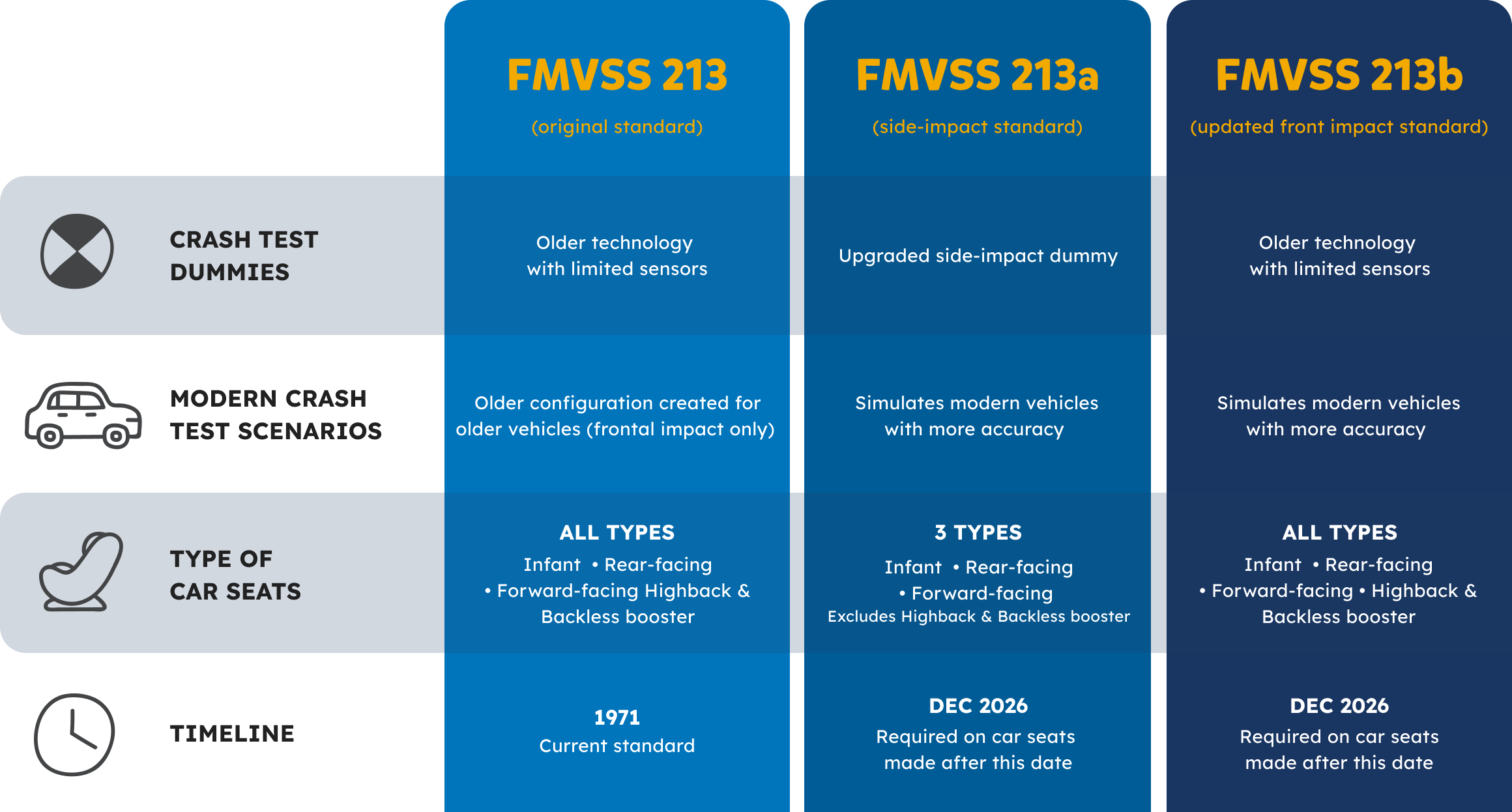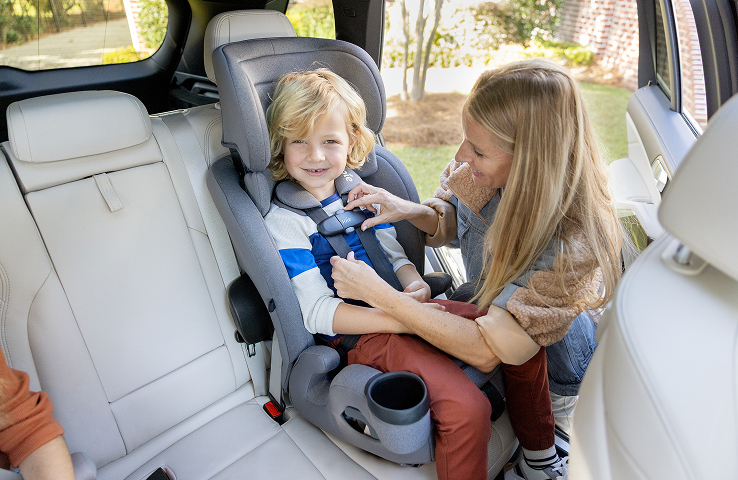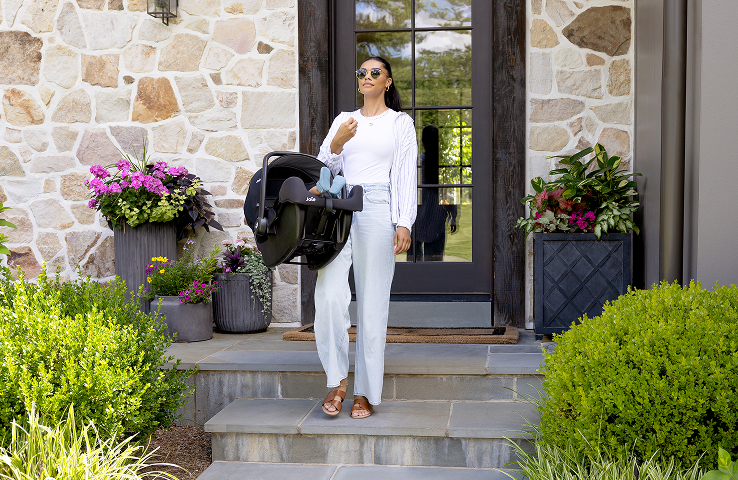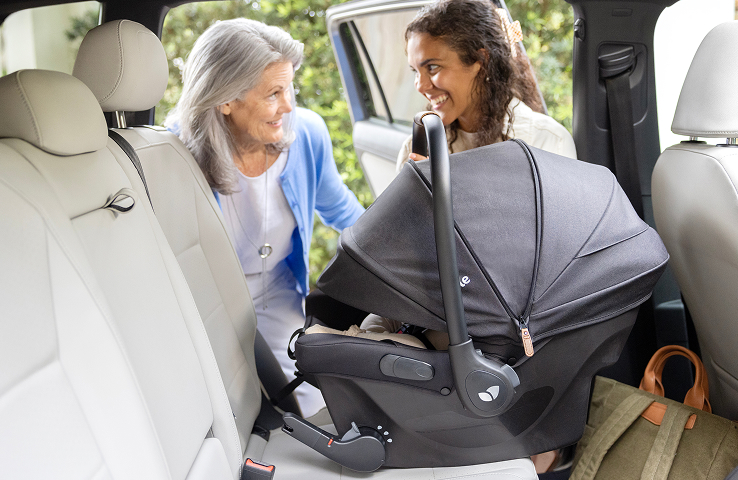
Breaking Down Federal Car Seat Standards
Breaking Down Federal Car Seat Standards
Navigating car seat standards can be quite challenging, and it’s perfectly understandable for parents to have questions. We’re here to clarify some of the recent changes to help you feel more confident in making informed decisions.
Let’s start with the basics. All car seats sold in the USA must pass the Federal Motor Vehicle Safety Standard, also known as FMVSS.
Since the start of FMVSS, we’ve seen some amazing changes in cars and car seats! With all these advancements, there is also a need for improved crash testing.
Here are some of the key features of each amendment:

Want more details?
Keep scrolling!
Want more details? Keep scrolling!

Let's Take a Closer Look
You may have heard about updated federal safety standards for car seats, and if not, you're in the right place! There are many laws and regulations that go into making car seats, and we want to make sure you understand some of the changes happening and why they are important. We’ll walk you through what the Federal Motor Vehicle Safety Standards (FMVSS) are, what is changing, why these changes matter, how they impact you, and how to know if your Joie car seat meets these standards.
What is FMVSS 213 and why does it matter?
FMVSS, the Federal Motor Vehicle Safety Standard, and its specific regulation, 213, for child restraint systems (or car seats), is a comprehensive set of safety standards. All car seats sold in the US are required to meet these standards, ensuring your child's car seat will react the way it should in the event of a crash. Learning about FMVSS and its changes will help you stay up to date about your child's safety by providing you with the information you need to make informed decisions.
What is 213a and 213b?
FMVSS 213a and 213b are updates made to the original FMVSS 213 regulations, which enhance the frontal-impact testing for all car seats and booster seats, and side-impact testing for harnessed car seats.
What changes are included in 213a and 213b?

Side impact certification
Before this amendment, brands might have mentioned “side-impact protection” in their marketing, but without a standard testing method, each brand's crash tests could differ. The introduction of amendment 213a is a win for consumers, as it provides clarity about the safety of car seats. If a car seat is tested to 213a, it means it has met the federally mandated side impact testing standard.

Frontal impact certification
Frontal-impact testing has always been a federal requirement; however, updates have been made to make the testing scenarios more realistic. Previously, testing benches were models of old vehicle seats (how old? very, very old—1974 Chevy Impala old...) The amendment known as 213b updates the testing requirements for frontal impacts, as well as the car seat bench that's used in testing, to better replicate today's vehicles.

Smart crash test dummies
Crash test dummies these days are nothing like the ones you may have seen in those videos they show in high school about driving safely. The new crash test dummies are smart, and are equipped with hundreds of sensors to more accurately indicate the impact to a child during a car seat crash test.
What is the timeline for the new standards?
Great news! Most Joie car seats already meet these new standards. By buying a Joie car seat, you can be sure that we are testing to the newest federal standards. If you have a car seat that does not meet FMVSS 213a and 213b, do not worry, it’s still safe to use and has passed rigorous tests. The new standards are not required yet, Joie is just staying ahead of the curve.

What if my seat is only tested to FMVSS 213?
Don't sweat it, it's still safe to use! Manufacturers can make seats that do not meet these new standards up until their implementation date (they must still meet the old standards), so if you buy a seat in June 2025, that car seat was likely manufactured before the new standard was required. Again, these seats are still safe to use. Car seat manufacturers can continue to sell these seats, they just will not be making any more seats that do not meet these new standards.
Which standard applies to your car seat type?

Not all car seats have to undergo the 213a testing, like highback and backless booster seats, which are designed to work with vehicle seat belts to properly position your child and do not need to provide side impact protection. Some manufacturers include side impact protection features, but it is not required.









